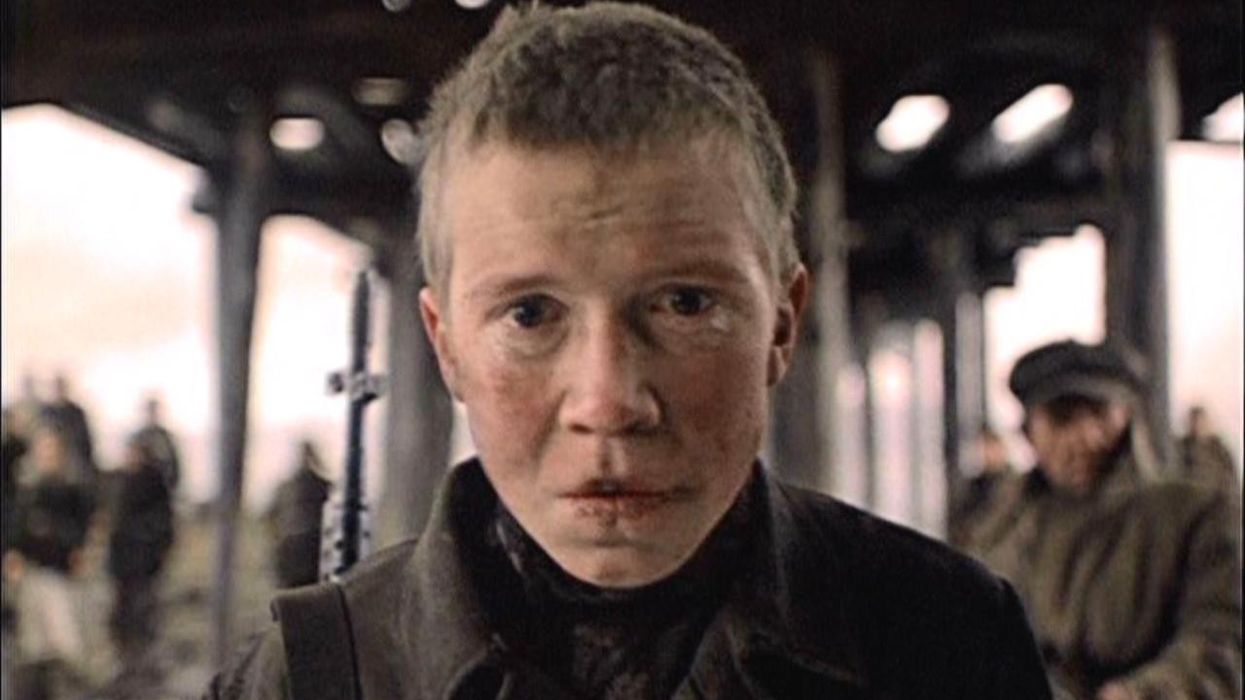How 'Come and See' Uses Horror to Make the Best Anti-War Movie You've Never Seen
This classic WWII film effectively draws its strengths from horror and surrealism instead of war movie tropes.

Come and See is one of the best anti-war films ever made, and yet, as this video shows, the 1985 WWII film by and large eschews war movie tropes, instead viewing the conflict through surrealism and horror. The war film is one of the most complicated and fraught genres in all of cinema. In a Roger Ebert review the critic wrote, "It's said that you can't make an effective anti-war film because war by its nature is exciting, and the end of the film belongs to the survivors," but he is quick to add that, "No one would ever make the mistake of saying that about...Come and See."
In this video essay from Ask Clauswitz, the film—which follows a young Belarusian boy over a few days as his world is invaded by the S.S. in 1943—is analyzed as a study in "fear and naïveté," effectively drawing its strengths from horror and surrealism instead of war movie tropes war movie tropes.
Released in 1985 and directed by Elem Klimov in the erstwhile Soviet Union, the film was made to commemorate the Red Army's victory over Nazi Germany in WWII, though Come and See is neither triumphalist or propagandistic. One of the key ways this is achieved is through perspective: while most war movies are seen through the eyes of combatants, Come and See, in the words of the video essay, thoroughly examines "the plight of the civilian," who, being unarmed, lacks agency, or "the luxury of their own determination." In other words, they can't fight back. In this movie, the Nazis are not enemies to be vanquished, but a monstrous and inhuman presence, as they were to the vast majority of their victims, including the untold millions who were systematically murdered in the Holocaust.
Note: all the following clips are from an English dub, but I'd highly recommend watching the subtitled version.
The film is mediated through the highly subjective, traumatized consciousness of Florya, a 14-year-old boy in Belarus in 1943. Eager to join the war effort, he hooks up with a group of local partisans. Posted as a sentry, he meets Glasha, a girl roughly his age, who is infatuated with the leader of the partisans. Then, in a surreal image that repeats through the film, a plane flies overhead; this time, though, German paratroopers float gently down from the heavens, blurry and unfocused like rain drops in the distance. As the essay notes, "the German soldier [is] obscured" throughout the film, and instead of individual enemies to be killed, they are "ghost[s], and they always seem to act as one."
[youtube https://www.youtube.com/watch?v=SELfwTauyzU&ab_channel=CHUCKCOLIN%27Smovieclips{HD} expand=1 site_id=26256498]
As the essay notes, "the camera is a tool to show the chaos of what is happening, and this is why many of the shots are long, panning shots that highlight the chaos that is occurring." Another key element of the film's aesthetic is that characters are repeatedly shown facing the camera, staring at the audience. We are often looking from the POV of Florya, but just as often the images are unattributed to a consciousness or character; the camera bears witness, and the overall effect is one of surreality, a quasi-breaking of the fourth wall where no one speaks into the camera, or is seemingly aware that they are in a film.
[youtube https://www.youtube.com/watch?v=kP4oTqm1F9c&ab_channel=CHUCKCOLIN%27Smovieclips{HD} expand=1 site_id=26256498]
Ultimately, the film wants us to experience "15 minutes of utter chaos, then nothing." These minutes lie at the heart of the film, and are its most unforgettable. "It is this nothingness that the film wants us to understand," the essayist states, and I'd argue that it's what sets the film apart from other war movies, which tend to flinch from the realities of war, and give the horrors a redemptive arc. Movies are not generally designed to depress their audiences, and so time and again, the unthinkable is shoehorned into a structure that allows the viewer to make sense of that which Come and See refuses to. Ultimately, every filmmaker can learn from this genre- (and mind-) bending cinematic experience.
Source: Ask Clauswitz
















